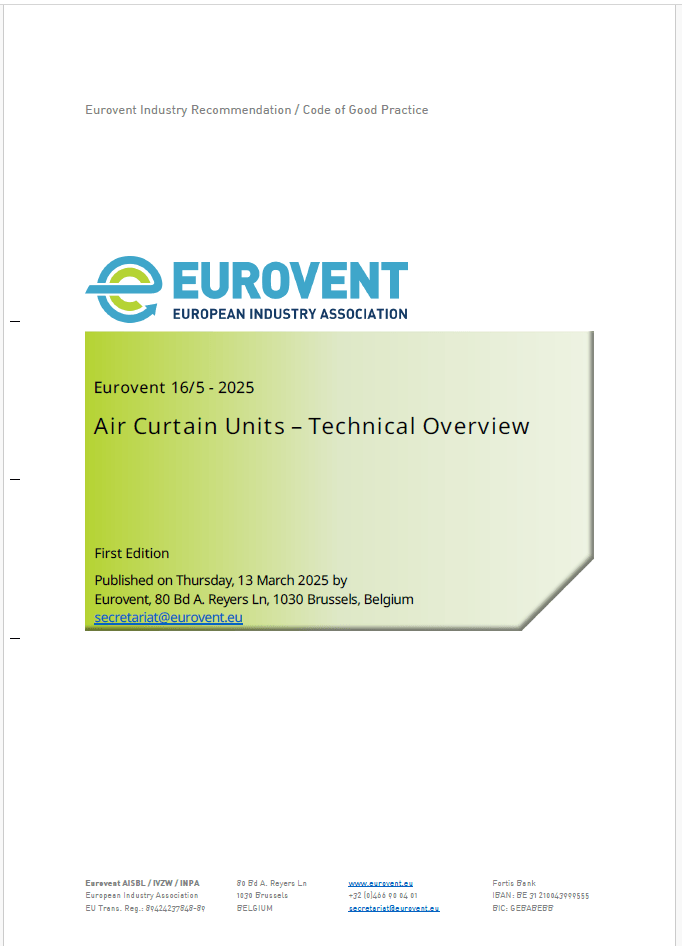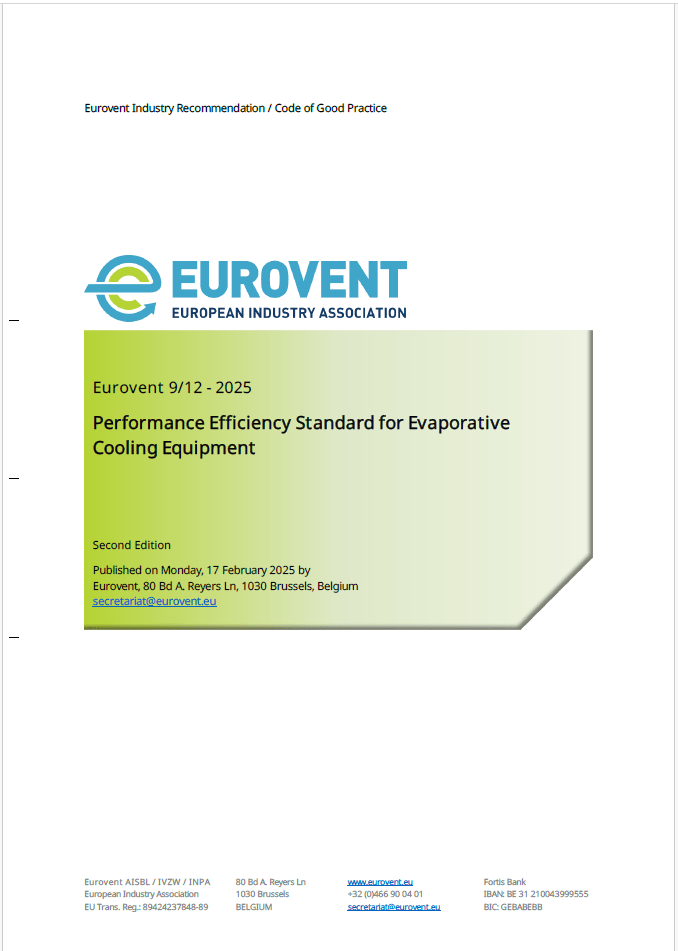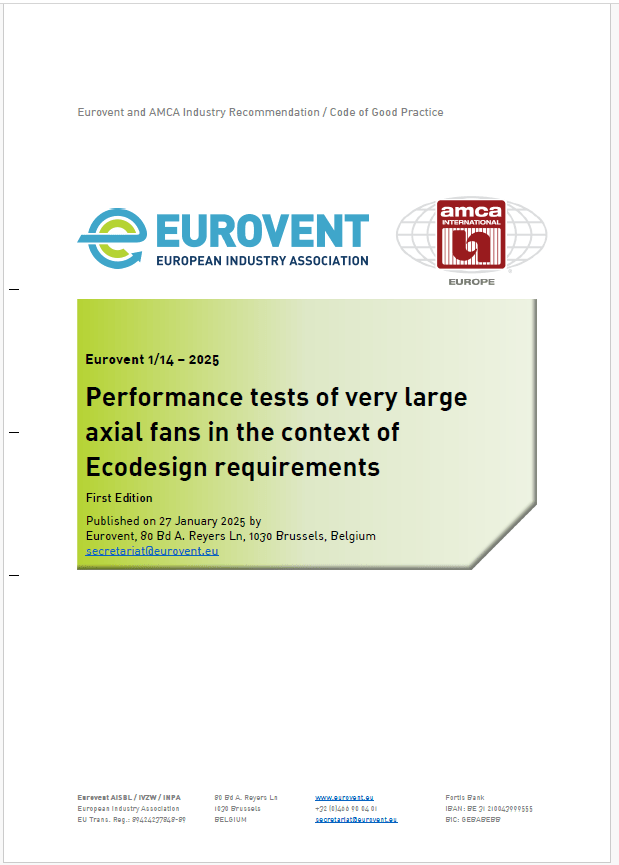In 2019, Du C-R, et al. published a paper on the ‘Effect of ventilation improvement during a tuberculosis outbreak in under ventilated university buildings’ in the journal Indoor Air. The study demonstrated the positive health impact of investing in proper ventilation and improved IAQ. The article provides a summary, excerpts and key takeaways from the study…
A global threat
Tuberculosis (TB) is a leading global epidemic, causing 1.6 million deaths worldwide in 2017. the shocking figure has only declined 2% per year, despite medical advances and the implementation of the so-called directly observed treatments, short-course (DOTS) programme, and the TB control strategy recommended by the World Health Organization (WHO).
TB, being an airborne disease, spreads rapidly in an indoor environment when infectious aerosols progressively accumulate from patient coughing, putting everyone at risk unless indoor air is continuously replaced with fresh outdoor air by ventilation. Although the role of ventilation in preventing TB transmissions has been widely proposed in infection control guidance, conclusive evidence is lacking.
The objective of the study was ‘to measure the effect of improving ventilation to levels with indoor CO2 lower than 1.000 ppm on this TB outbreak, focusing on the risk of contacts to become new secondary infectious TB cases’.
The profile of an outbreak
Despite Taiwan’s advanced public health services, a large outbreak involving 27 active TB cases and 1665 contacts occurred at a poorly ventilated university building from 2010 to 2013.
The university building had:
- Indoor CO2 level up to 3.204 ppm as the outbreak unfolded
- Around 10.000 students
- Central mechanical ventilation and air-conditioning system to maintain the temperature within a comfortable range in a hot and humid climate
- No classrooms with independent ventilation systems (The air circulates between classrooms)
- No extractor ventilation machines had been installed for underground floors to minimise electricity cost
- Lack of air outflow created a positive indoor pressure that prevented the inflow of fresh hot air
The spread
The outbreak began in classrooms in the underground floors of a building.
The first patient was diagnosed with smear-positive non-cavitary TB in November 2010 and was immediately put on sick leave and required to undergo treatment.
Initial chest screening of 44 classmates, 3 teachers and 4 family members, found no additional cases. However, from April to September 2011, 11 new cases emerged. Most of these cases had been in the same classroom but never had close contact with the first patient.
There was an investigation on possible environmental factors due to the ongoing transmission, despite the early removal of the first patient.
A careful investigation
A retrospective cohort study of all contacts, totalling 1665, was conducted ‘to examine the impact of ventilation improvement on mitigating risk for new infectious TB cases’. The study utilised data from the National Surveillance of Notifiable Contagious Diseases (NSNCD), a ‘centralised cloud-based case management database to ensure that all new TB cases from the list of university students, employees, and TB patients’ contacts were included’.
As part of its contact investigation, follow-ups and evaluations were made on:
- Household contacts
- People with 30-40-hour exposure to shared air (defined as staying in the same floor or within the same building with any infectious TB patients)
In addition, ‘Public health nurses used lists of students/faculties/employees, curriculum, and class rosters to identify as many contacts as possible. To analyse the chain of transmission, all contacts were linked to the first source case he/she had been exposed to’.
How was the CO2 measured?
- Standard portable CO2 meters, TSI-8760 (TSI Incorporated, with precision range of ±50 ppm),15 were used to measure CO2 levels.
- The CO2 meters were calibrated using the National Institute of Standards and Technology standard gases (0/910/3.010 ppm).
- All CO2 measurements were conducted during peak hours (10 AM to noon or 1 PM to 5 PM) when almost every classroom was occupied (20-50 students per class).
- Measurements were taken beginning 30 minutes after the commencement of a class and lasted until the end of a class. One to four sites were sampled, based on classroom size.
- The measurement was repeated every 10 seconds for 5-15 minutes.
- The maximum, minimum, and average CO2 levels, classroom population, and numbers of open windows and doors (at the time of measurement) were recorded.
Initial ventilation assessment
Initial inspections of ventilation specialists from the Taiwan Institute of Labor, Occupational Safety and Health (ILOSH) of the classrooms on the underground floors of the building revealed that:
- The CO2 level measured at the classroom located on B3 floor where the first infected patient attended class was as high as 3.204 ppm.
- The CO2 level measured at Classroom CB202 on B2 floor was 2.926 ppm.
- The CO2 level measured at the inlet of airflow was 1.600 ppm, indicating the airflow in underground floors was nearly 100% recirculation, with little inflow of fresh outside air.
A critical intervention
Following the assessment, authorities enforced the following ventilation engineering recommendations:
For the ground floor and above, the recommendation was to keep the windows open to serve as air outlets to facilitate both natural and mechanical ventilation. For the underground floors, the recommendation was to install extractor ventilation machines to improve air outflow along with constructing new ventilatory circuits for Building C to normalise the outflow of exhaled air so that the pre-existing inlet pipes from the roof could function as designed.
The intervention decreased ground floor CO2 levels to 700-800 ppm but the CO2 levels on underground floors were still up to 1.413 ppm. A glass wall at the ground floor door in Building C blocked the outflow of exhaled from classrooms on the three underground floors. The outbreak coordination committee, therefore, recommended removing the aforementioned glass wall. After these interventions, the ventilation levels in Building C improved to 370-400 ppm on the ground floor and 591-603 ppm (23.6-25.1 L/s per person) on the underground floors.
The same ventilation engineering approach was implemented in other buildings as well.
The results
‘After ventilation engineering, the secondary attack rate of university contacts dropped to zero (contacts of TB cases notified before January 16, 2012:20/728 [2.7%] vs contacts of TB cases notified after January 16, 2012:0/278 [0.0%]’.
‘Following the study of 1665 contacts involved in this outbreak, exposure to source cases under indoor CO2 1.000 ppm was associated with a higher risk for the contacts to become one of the new infectious TB cases’.
Key takeaways
‘This study provides the first empirical data showing that improving indoor ventilation to levels with CO2 <1.000 ppm is highly effective in controlling a TB outbreak that occurred in a poorly ventilated indoor environment’.
Improving ventilation to indoor CO2 levels <1.000 ppm was associated with a 97% decrease in risk for contacts to become new infectious TB cases and helped to end the TB outbreak in University A.
Prompt diagnosis, isolation, and treatment for both TB and LTBI are essential for the control of this outbreak. However, these chemotherapy-based interventions in University A were less successful than what should be expected. The role of poor ventilation in this outbreak was discovered precisely because of the ongoing occurrence of tertiary cases despite early removal of the index case 1 year ago. The worsening situation in October 2011 prompted investigations of indoor ventilation and the subsequent ventilation engineering.
In retrospect, infectious aerosol accumulated in the poorly ventilated environment. Without the ventilation improvement, the outbreak in University A would be more prolonged and more difficult to control.
A major strength of this study is the comprehensive epidemiological investigation. The outbreak investigation team found that TB transmission can occur following exposure to shared air for as short as 30 hours under poorly ventilated environments.
Another strength is the comprehensive contact tracing and long-term follow-up based on Taiwan`s highly effective public health system.
The NIOSH and other governmental agencies had recommended indoor air quality standards based on CO2 levels of 600-1.500 ppm for schools and workplaces.
The considerations for these recommendations are for comfort and learning/working efficiency. Our results support the hypothesis that there is a threshold of ventilation rate that stop TB epidemic’.
However, our data are not precise enough to exactly define this threshold, which could be in between 600 and 1.000 ppm CO2 in this outbreak. Moreover, the threshold could vary across different TB outbreaks — a higher ventilation rate would be required to neutralise the hazard from a more infectious index case.
In conclusion, the study shows that maintaining adequate indoor ventilation could be a highly effective strategy for controlling TB outbreaks. Our findings highlight the need to assess indoor ventilation status in TB outbreak investigation. In congregate settings where there is known to be a high risk of TB, it may be beneficial to make pre-emptive improvements to building ventilation. A refocusing on the importance of adequate ventilation in TB control may prevent hundreds of thousands of TB cases and be the game-changer for achieving the global End TB target’.
Source of study
Chun-Ru Du, Shun-Chih Wang, Ming-Chih Yu, Ting-Fang Chiu Pei-Chun Chuang, Ruwen Jou, Pei-Chun Chan, Chin-Tai Fang. Effect of ventilation improvement during a tuberculosis outbreak in underventilated university buildings. Indoor Air. 2020;30:422–432. https://doi.org/10.1111/ina.12639



















